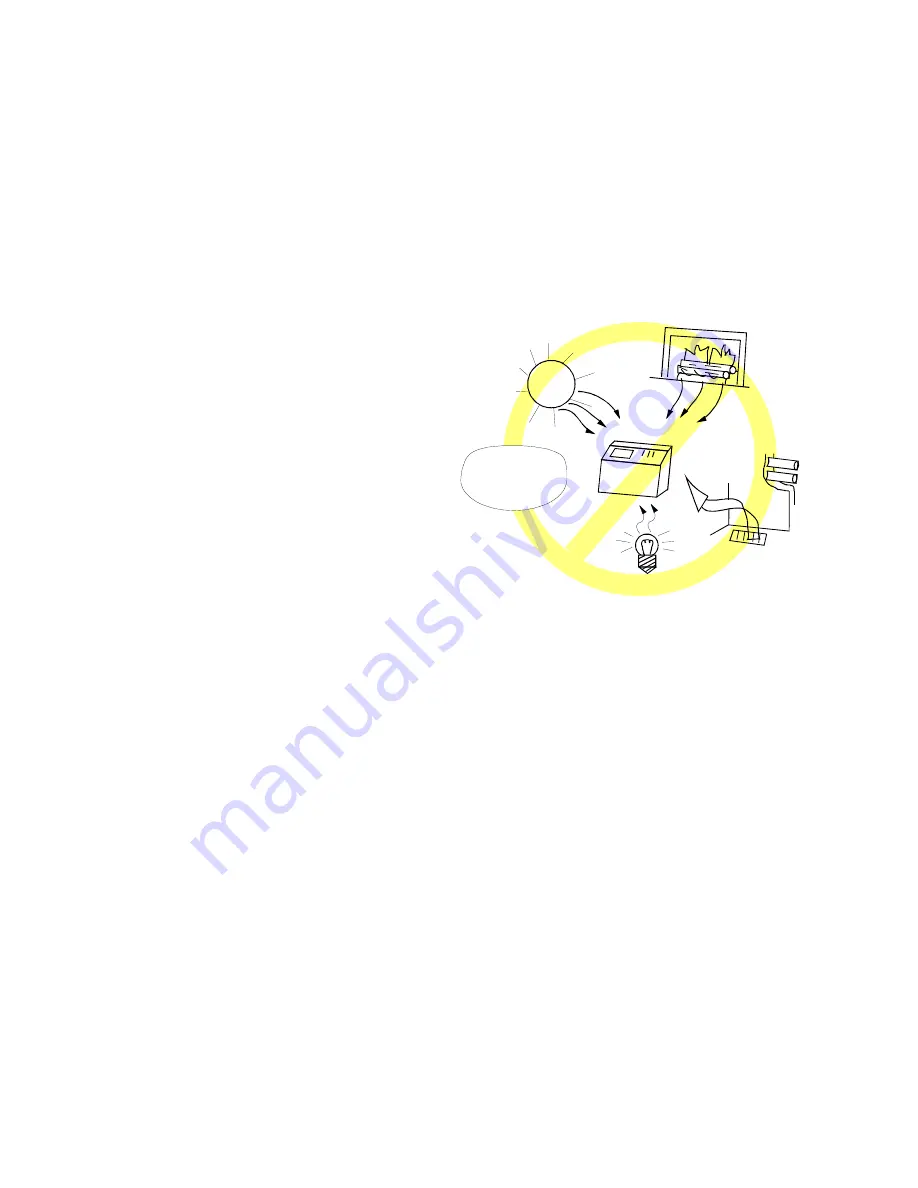
PRODUCT DESIGN
36
Rev. 0
Existing Furnace Removal
Note:
When an existing furnace is removed from a venting
system serving other appliances, the venting system may
be too large to properly vent the remaining attached appli-
ances.
The following vent testing procedure is reproduced from
the American National Standard/National Standard of
Canada for Gas-Fired Central Furnaces ANSI Z21.47-
1993, CAN/CGA-2.3-M93 Section 1.23.1.
The following steps shall be followed with each appliance connected to
the venting system placed in operation, while any other appliances
connected to the venting system are not in operation:
a. Seal any unused openings in the venting system;
b. Inspect the venting system for proper size and horizontal pitch,
as required by the National Fuel Gas Code, ANSI Z223.1 or the
CAN/CGA B149 Installation Codes and these instructions. De-
termine that there is no blockage or restriction, leakage, corro-
sion and other deficiencies which could cause an unsafe condi-
tion;
c. In so far as practical, close all building doors and windows and
all doors between the space in which the appliance(s) connected
to the venting system are located and other spaces of the build-
ing. Turn on clothes dryers and any appliance not connected to
the venting system. Turn on any exhaust fans, such as range
hoods and bathroom exhausts, so they shall operate at maxi-
mum speed. Do not operate a summer exhaust fan. Close fire-
place dampers;
d. Follow the lighting instructions. Place the appliance being in-
spected in operation. Adjust thermostat so appliance shall oper-
ate continuously;
e. Test for draft hood equipped spillage at the draft hood relief
opening after 5 minutes of main burner operation. Use the flame
of a match or candle;
f.
After it has been determined that each appliance connected to
the venting system properly vents when tested as outlined above,
return doors, windows, exhaust fans, fireplace dampers and any
other gas burning appliance to their previous conditions of use;
g. If improper venting is observed during any of the above tests,
the common venting system must be corrected.
Corrections must be in accordance with the latest edition
of the National Fuel Gas Code NFPA 54/ANSI Z223.1 and/
or CAN/CGA B149 Installation Codes.
If resizing is required on any portion of the venting system,
use the appropriate table in Appendix G in the latest edition
of the National Fuel Gas Code ANSI Z223.1 and/or CAN/
CGA B149 Installation Codes.
Thermostat Location
In an area having good air circulation, locate the thermo-
stat about five feet high on a vibration-free inside wall. Do
not install the thermostat where it may be influenced by any
of the following:
•
Drafts, or dead spots behind doors, in corners, or
under cabinets.
•
Hot or cold air from registers.
•
Radiant heat from the sun.
•
Light fixtures or other appliances.
•
Radiant heat from a fireplace.
•
Concealed hot or cold water pipes, or chimneys.
•
Unconditioned areas behind the thermostat, such
as an outside wall.
HOT
COLD
DRAFTS OR DEAD SPOTS
-BEHIND DOORS
-IN CORNERS
-UNDER CABINETS
Thermostat Influences
Consult the instructions packaged with the thermostat for
mounting instructions and further precautions.
Drain Trap and Lines
In horizontal applications the condensate drain trap is se-
cured to the furnace side panel, suspending it below the
furnace. A minimum clearance of 4 3/4 inches below the
furnace must be provided for the drain trap. Additionally,
the appropriate downward piping slope must be maintained
from the drain trap to the drain location. Refer to
Conden-
sate Drain Trap and Lines section for further details. If the
drain trap and drain line will be exposed to temperatures
near or below freezing, adequate measures must be taken
to prevent condensate from freezing.
Leveling
Leveling ensures proper condensate drainage from the heat
exchanger and induced draft blower. For proper flue pipe
drainage, the furnace must be level lengthwise from end to
end. The furnace should also be level from back to front or
have a slight tilt with the access doors downhill (approxi-
mately 3/4 inches) from the back panel. The slight tilt al-
lows the heat exchanger condensate, generated in the
recuperator coil, to flow forward to the recuperator coil front
cover.
















































